
The notion of Covid-19 and travel restrictions becoming a thing of the past looks more and more plausible with each passing day, as the vaccine rollout is in full steam all over the world. Exploring far-off exotic destinations may not be possible just yet, but there’s no harm in preparing for the moment the borders reopen or even just engage in a bit of daydreaming.
The list below features a few of the world’s lesser-known yet absolutely awe-inspiring natural wonders. Pink mountaintops, glaciers, and sparkling lagoons are just some of the incredible natural wonders you can find when exploring the remotest corners of the world.
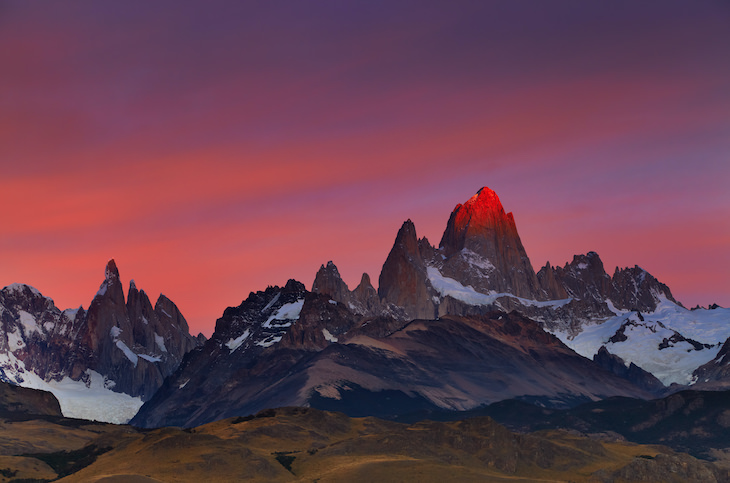
Location: the Southern Patagonian Ice Field, Between Chile and Argentina
Mount Fitz Roy is undoubtedly one of the most breathtaking hiking areas in Patagonia. The majestic mountain is also known as El Chalten. Chalten is a term in the Aionikenk language by which the ancient Tehuelches named this mountain they considered sacred. Its meaning is “Smoky Mountain.” This moniker came from the belief the mountain was a volcano because its peak was mostly covered by clouds.
The mountain can be seen from the nearby little village also named El Chalten, but the most spectacular views can only be accessed on foot by hiking one of the many trails surrounding the peak. The hikes range in difficulty from easy to challenging, so you can enjoy the beautiful vistas no matter what your level of hiking ability is. The trails wind through an incredibly diverse landscape of wooded areas, open fields, and pristine lakes with glaciers and the peaks of Fitz Roy in the backdrop. At sunrise, the majestic mountain takes on dreamy pink hues; a sight that must not be missed if you ever visit this beautiful corner of the world.
Related: 10 Glorious Pictures of Patagonian Nature and Wildlife
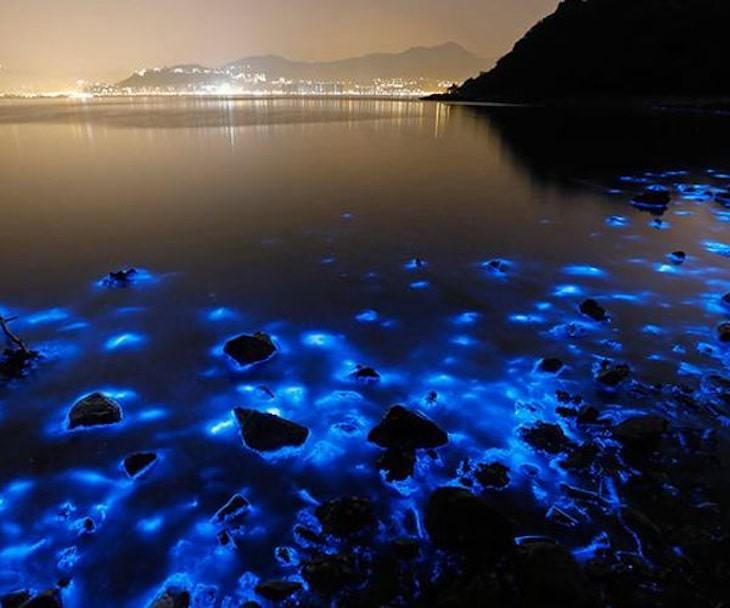
Location: Falmouth, Jamaica
Jamaica is a popular destination for many reasons, including its beautiful beaches, vibrant atmosphere, and delicious food. It is also home to the natural wonder of the luminous lagoon. Located in the eminent point where the Marthe Bea River meets the Caribbean Sea, the lagoon held one of the busiest wharves during the height of the sugar trade in the 18th century. Years after the decline of the sugar trade, scientists discovered the lagoon was significant for much more than its strategic location.
The luminous lagoon is home to millions of microorganisms called dinoflagellates. At night, the dinoflagellates produce an eerie glow, reflecting the outlines of fish and other objects in the water, and the whole lagoon sparkle and glisten. You could take a boat tour to witness this incredible phenomenon, and you are even allowed to jump in the water and swim while surrounded by a luminous glow.
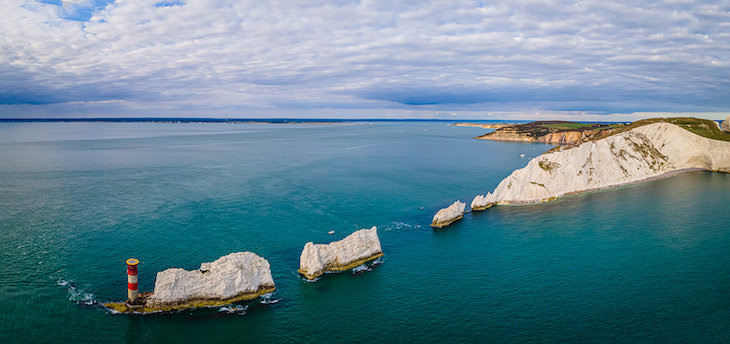
Location: Isle of Wight, United Kingdom
If you ever visit the Isle of Wight, you will have the opportunity to see the Needles, a world-famous natural wonder. Despite their name The Needles aren’t actually needles at all; they are three chalk stacks that rise about 30m out of the sea off the western extremity of the Isle of Wight. At the far end is the iconic red and white Trinity Lighthouse, which used to warn sailors of the treacherous waters below, and is now the island’s most famous landmark.
Unfortunately, traveling to the rocks themselves is not permitted due to dangerous tides, but they make for a fantastic view from the land side. Originally, there were four rocks, but one collapsed during a storm beck in 1764. Incidentally, this exact rock, which was called ‘Lot’s Wife’ was the one that gave the Needles their name - as it was thin and pointy, resembling a needle. Although the remaining rocks do not share those features in the slightest, the name stuck. The gap where 'Lot’s Wife' once stood is easily discernible, and some say it looks like a missing tooth from a very large smile.
Related: 15 Lesser-Known Locations of Exceptional Natural Beauty
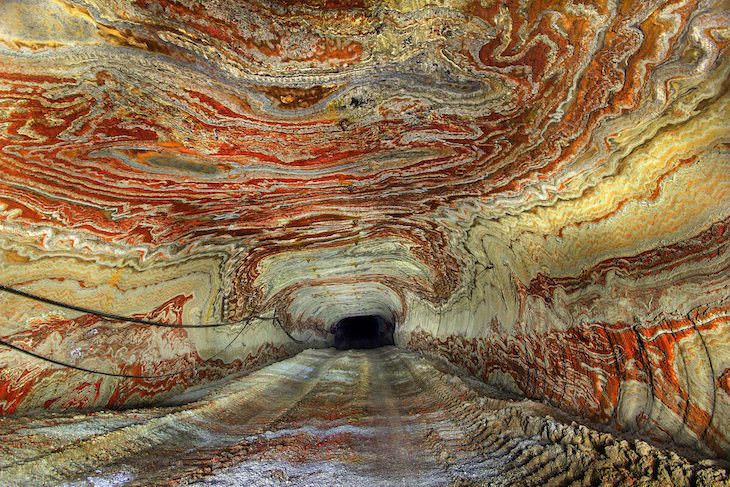
Image Source: Amusing Planet
Location: Yekaterinburg, Russia
Deep underneath the city of Yekaterinburg in Russia lies one of the world’s most colorful and unique caves. The psychedelic-looking patterns covering the walls, floors, and ceiling, after which the cave is named, are caused by the natural layers of the carnallite mineral.
Unfortunately, most of the passageways are now closed and off-limits to the public without a special government permit. The site was introduced to the wider public by photographer Mikhail Mishainik, who spent more than 20 hours exploring the mine and documenting its one-of-a-kind appearance. “The mines are huge and stretch many kilometers in width and length, a single tunnel can be over four miles long. It is hard to describe how it feels being so far down, you lose all track of time and the air is very dry, you always feel thirsty,” he described the experience to The Daily Mail.
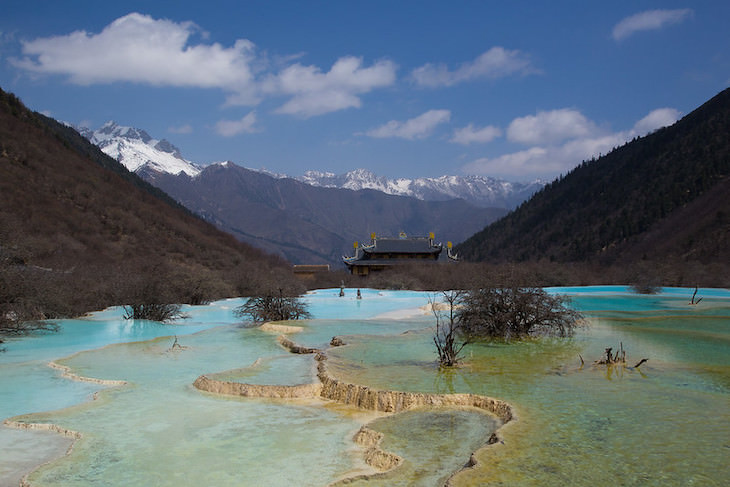
Image Source: Jean-Marie Hullot / Flickr
Location: Sichuan Province, China
Should your travels ever take you to China, the Hunaglong National Park is an absolute must-see. In this scenic nature reserve, you will find snow-capped mountains, evergreen forests, hot springs, and a picturesque canyon all within its 700 square kilometers. The most distinct feature of the site, which is also the source of its name, is the colorful travertine pools, formed by calcite deposits.
The Yellow Dragon Gully is where the travertine landscapes are most concentrated. The travertine formations are 3.600 meters long and they are naturally arranged to look like a Chinese Dragon, hence the gully’s name. Huanglong (the direct translation of which is also ‘yellow dragon') is home to many endangered species including the giant panda and the golden snub-nosed monkey. In 1992 the reserve was declared a UNESCO World Heritage Site.
Related: Admire 15 World-Famous National Parks from Your Home

Location: Afar Region, Ethiopia
The sulfurous hot springs, salt mines, and acid pools of the Danakil Depression are far from being the most hospitable environment, yet they attract a huge number of visitors to Ethiopia every year. Being one of the hottest places in the world and one of the lowest, at 400 feet below sea level, Danakil’s conditions are indeed exceptionally harsh.
Salt miners travel for hours, often by camel caravans, to extract slabs from the flat pans around Lake Afar. Salt is the region’s “White Gold'' and was a form of currency in Ethiopia until the 20th century. In 2016, researchers from the University of Bologna conducted a study to see whether microbes can withstand Danakil’s scorching conditions. It turned out that they did, which led scientists to wonder whether they would also be able to survive on Mars.
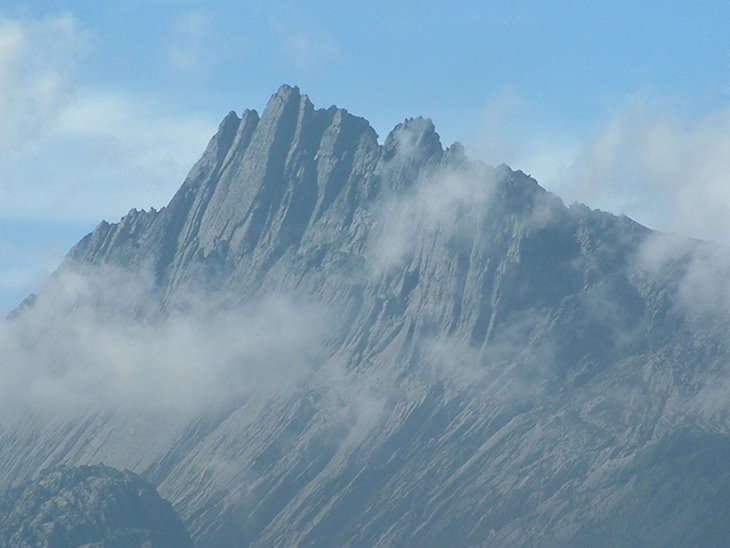
Image Source: Alfindra Primaldhi / Wikipedia
Location: Island of New Guinea, Indonesia
Carstensz Pyramid, also known as Puncak Jaya, is the highest mountain in Indonesia, and the highest island peak in the world. The ‘pyramid’ is a large limestone escapement located on the island of New Guinea, jutting out as 16,024 feet above the jungle below. Carstensz is high and wet enough to support some small glaciers near the top. The Dutch explorer John Carstensz was the first European to lay eyes on these glaciers, on a rare clear day in 1623. However, the sighing went unverified for over a century and Carstensz was ridiculed in Europe when he said he had seen snow near the equator.
The mountain was first conquered by Austrian mountaineer Heinrich Harrer. Climbing to the top is an extremely challenging endeavor, which is only permitted through extreme tourism agencies and requires a government permit.
Share these exceptional locations with other nature lovers!